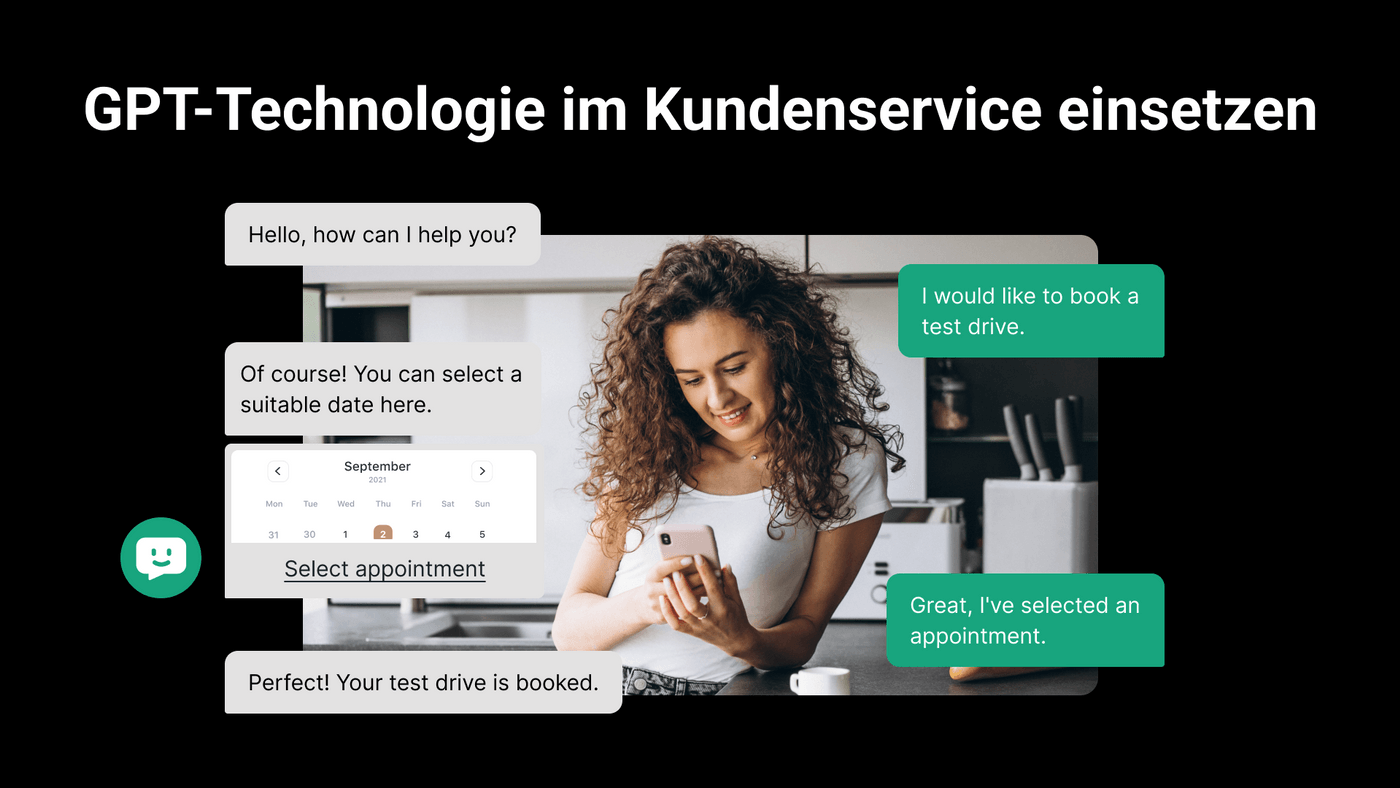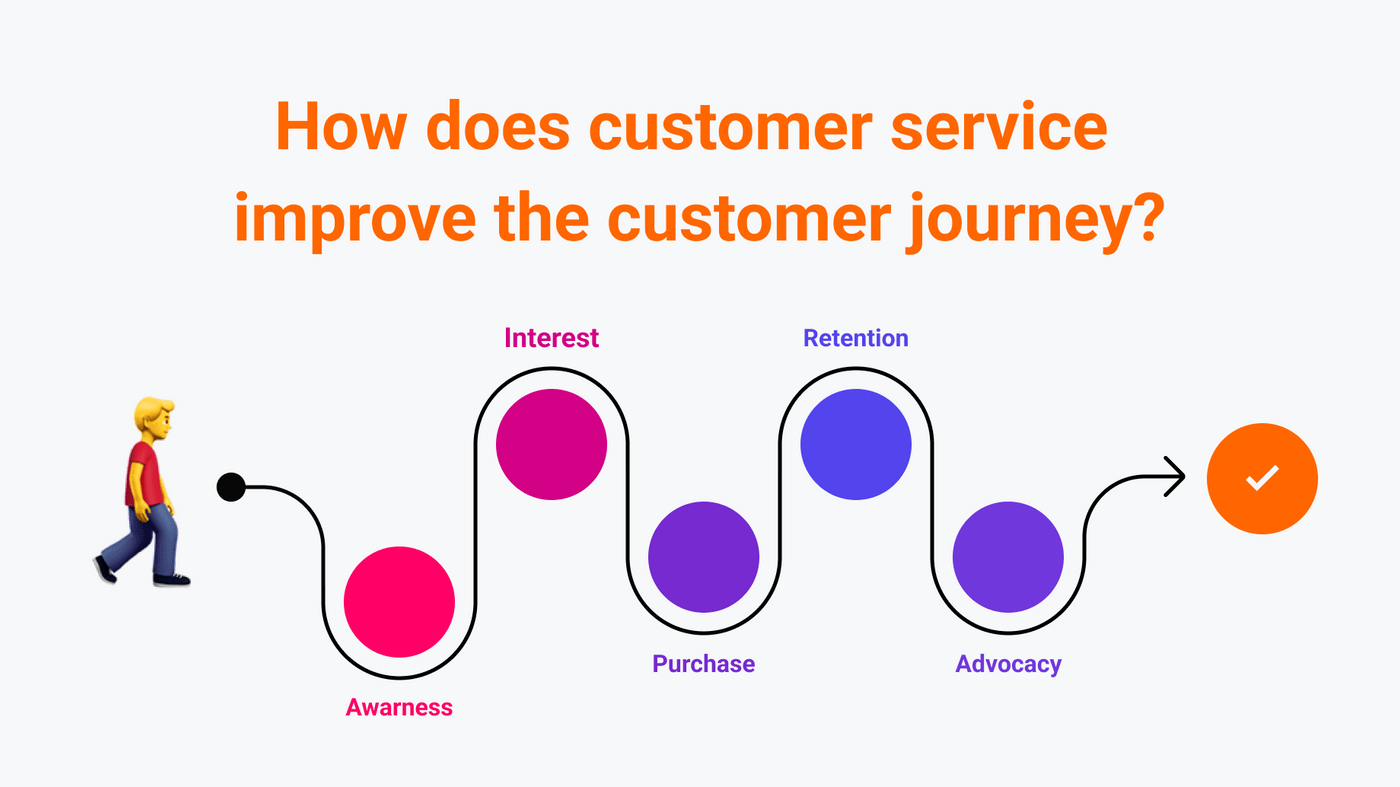Customer Service
Customer service - Optimize your customer experience
What does customer service mean? How can you improve your customer service? Methods & tips for good customer service with OMQ.

Customer service definition
The term ‘customer service’ refers to the entirety of all services and measures that a company offers in order to process customer inquiries, requests and complaints and to establish and maintain a positive customer relationship. This includes supporting and advising customers before, during and after the purchase of a product or service.
Customer service can take various forms, such as personal advice, telephone hotlines, email support, chat support, FAQ areas on the website or social media channels. The aim of customer service is to increase customer satisfaction, strengthen customer loyalty and thus promote the long-term success of the company.
In a nutshell…
Customer service encompasses all the services and measures a company uses to process customer inquiries and build positive customer relationships.
Various communication channels such as telephone hotlines, e-mail support and live chats enable direct and fast customer interaction.
Effective customer service is crucial for customer satisfaction, customer loyalty and company success.
By automating customer service processes with technologies such as chatbots, companies can reduce costs, increase efficiency and improve customer satisfaction.
The importance of customer service
Customer service is of central importance to the success of a company. Good customer service contributes significantly to customer satisfaction, increases customer loyalty and promotes positive word-of-mouth advertising. Satisfied customers are more likely to buy from a company again and recommend it to others.
In addition, effective customer service can help to resolve complaints and problems quickly and professionally, which builds customer confidence as it is the first point of contact for customers when they have questions. In a competitive market, outstanding customer service can therefore be an important differentiating factor.
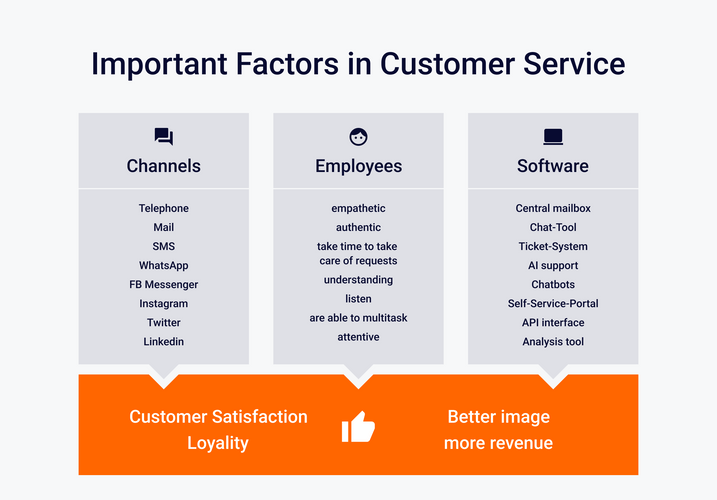
Factors that are crucial to customer service and increase customer satisfaction.
10 tips for good customer service
Excellent customer service is a crucial factor in a company’s success. Here are ten tips that can help you provide outstanding customer service:
- Customer orientation: The customer should always be the focus. It is important to listen actively, understand the customer’s needs and offer individual solutions.
- Fast response times: A quick response to customer inquiries is crucial. Whether it’s a phone call, an email or a live chat, short response times are appreciated by customers.
- Clear communication: Clear and understandable language should be used. Technical jargon should be avoided unless it is understandable and necessary for the customer.
- Professionalism: A professional demeanor, courtesy and respect are essential, even if the customer is frustrated or dissatisfied.
- Show empathy: Understanding and empathy for the customer’s situation are the be-all and end-all. An empathetic approach can help to gain and strengthen the customer’s trust.
- Solution-oriented thinking: Customer problems should be solved effectively instead of adhering exclusively to company guidelines.
- Obtain feedback: This provides valuable insight into areas that can be improved and shows customers that their opinion is valued.
- Further training: A well-trained employee can respond more effectively to customer inquiries and solve problems.
- Use technology: Modern technologies such as CRM systems or chatbots can make customer service more efficient and user-friendly.
- Reassurance: After solving a customer problem, it is important to check again with the customer that they are satisfied and have no further questions or problems. Even after the purchase process, customer service should not end abruptly.
To implement these tips, there are various methods in customer service that ensure that customer service employees provide good service in order to develop particularly good customer loyalty.
Customer service methods
Effective and, above all, customer-oriented customer service can, as already mentioned, be designed using various methods. For example, there are communication channels that can be used:
Telephone support
Customers can receive support via a hotline. It enables direct communication and quick resolution of problems.
E-mail support
Customers can send their questions or problems by e-mail. This provides written communication and the ability to provide detailed information.
Live Chat
A chat window on the website allows customers to communicate with a customer service representative in real time. This is particularly useful for quick questions or problem solving.
Social media
Many companies offer customer service via platforms such as Facebook, Twitter or Instagram. Customers can send public or private messages to get support.
FAQs and knowledge databases
By providing frequently asked questions (FAQs) and a knowledge database, customers can find answers to their questions themselves.
However, there are other methods on the part of the company to ensure smooth interaction with customers. For example, customer feedback can be collected in order to improve services and products. Surveys and reviews are the main methods used here. Another method is complaint management, in which customer complaints and problems are addressed in a targeted manner, allowing them to be optimized more quickly.
There are also regular training courses for employees to improve their skills and knowledge in the customer service environment and ensure a high standard of quality.
The use of technology-supported tools such as CRM systems, ticketing systems and other technologies such as AI chatbots also help to make customer service efficient and organized.
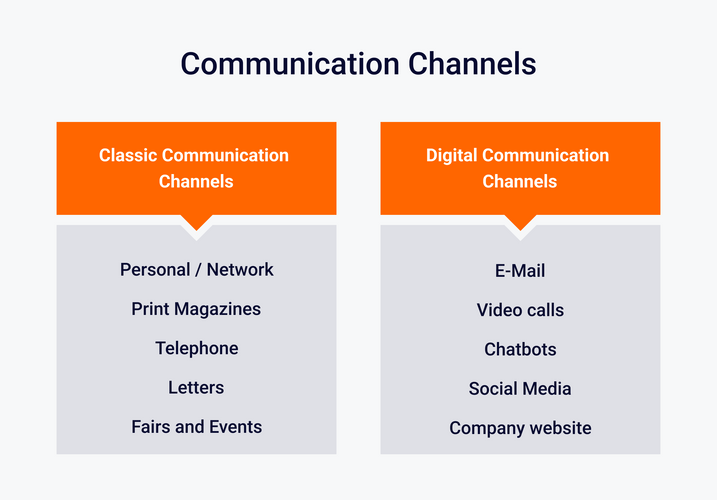
Classic communication channels and digital communication channels
What are CRM systems?
CRM refers to customer relationship management, which stands for the alignment of business processes with the customer. This includes, for example, looking at customer data, interactions and all other points of contact between the company and its customers.
CRM systems are systems for managing customer relationships in order to easily record data about your own customers. This can significantly optimize various areas such as marketing, sales, customer service, accounting and the management of some companies.
Communication channels in customer service
Customer service communication channels are the various ways in which companies interact with their customers and provide support. Common channels include telephone hotlines, email support, live chats, social media and self-service portals. Each channel has its own advantages and is suitable for different types of inquiries and customer preferences.
Telephone hotlines allow for direct and personal communication, while email support provides detailed information and written follow-up. Live chats offer quick answers in real time, and social media allows for public or private interactions and provides a platform for quick feedback.
Self-service portals and FAQ areas allow customers to find answers to their questions and solve problems on their own. The selection and integration of suitable communication channels are crucial to ensure efficient and customer-oriented customer service.
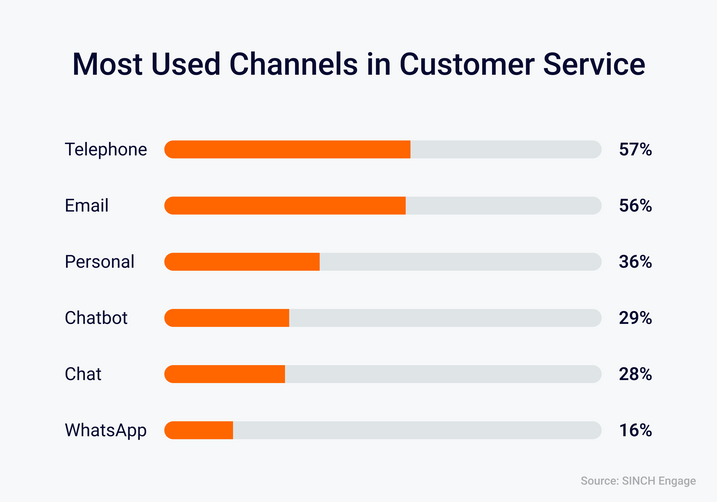
Survey about the usage of service channels. Source: SINCH engage.
Measuring the quality of customer service
The quality of customer service can be measured using various methods. One important approach is to collect customer surveys and direct feedback. Through regular surveys, you can find out how satisfied customers are with the service and where there is room for improvement.
It is also helpful to monitor ratings and comments on review platforms or social media to get a comprehensive picture of customer satisfaction.
Another method of measuring service quality is to analyze service metrics such as response time, the number of resolved requests per day or customer complaints. These key figures can provide information on how efficiently and effectively customer service is working.
Verbesserung der Servicequalität
Improving service quality
In order to continuously improve the quality of customer service, it is important to analyze the collected data and feedback on a regular basis. This involves identifying areas where there is a need for improvement and implementing specific measures for optimization.
Targeted training and further education of service employees can help to improve their customer service skills and knowledge. Training should not only teach technical skills, but also soft skills such as communication, empathy and problem-solving skills.
It is also important to promote a corporate culture that focuses on the customer ( → customer centricity). Employees should be encouraged to proactively approach customers, put themselves in their shoes and always look for solutions to their problems.
By combining and continuously applying approaches to measure and improve service quality, excellent customer service can be provided and customer satisfaction can be increased in the long term.
Customer Centricity
Customer centricity describes an approach in which companies focus on the customer. The main objective is to solve problems and thereby win and satisfy customers.
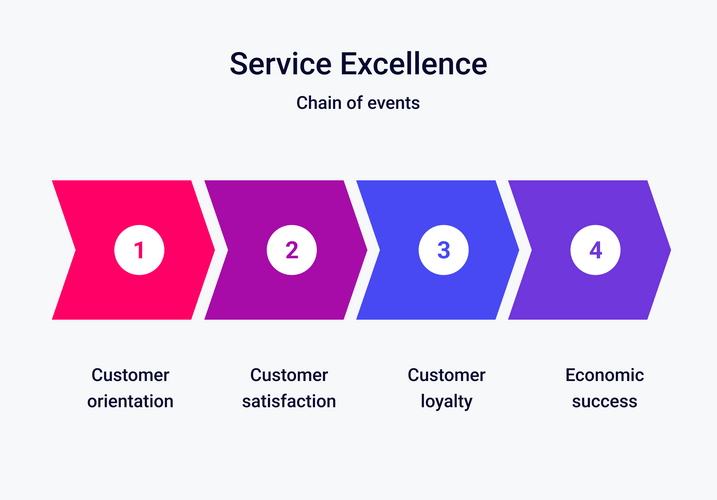
Service Excellence.
Customer service automation
Customer service automation refers to the use of technology to automate customer service processes and make them more efficient. Through the use of chatbots, automated response systems or self-service portals, frequently asked questions can be answered immediately and simple customer concerns can be resolved quickly without the need for a human customer service employee to intervene.
These automation technologies enable 24/7 availability and can provide an immediate response to customer queries, which can increase customer satisfaction. In addition, they can also help to reduce the workload for customer service and cut costs.
However, it is important to plan and implement automation carefully to ensure that it helps improve the customer experience and does not lead to customer frustration. A combination of automation and face-to-face customer service can often be the best solution to provide efficient and customer-centric customer service.
There are various options and providers who have set themselves the task of significantly improving the customer service of companies and thus ensuring that there is no dissatisfaction among customers.
Advantages of customer service automation
Customer service automation offers a number of benefits that help companies to work more efficiently and in a more customer-oriented way. One of the main benefits is availability. By using chatbots and self-service, customers can receive support around the clock, which increases customer satisfaction and contributes to a positive customer relationship.
In addition, automation enables a quick and consistent response to frequently asked questions and concerns. This can reduce customer service workload and improve response times. Customers appreciate receiving answers to their questions quickly and efficiently without having to wait for long periods of time. Customers no longer have to wait in a long queue, but receive immediate solutions from the service department, regardless of when they make their inquiries.
Another advantage is the cost savings. By automating recurring requests, companies can reduce their operating costs and free up resources for other important areas or complex requests. This leads to a more efficient use of employee resources and an increase in overall customer service efficiency.
In summary, customer service automation enables companies to improve their service quality, reduce costs and increase customer satisfaction at the same time. It provides a win-win situation for companies and customers by enabling efficient yet customer-friendly service.
The same knowledge in all communication channels
OMQ automates customer service by implementing a knowledge database that distributes all service knowledge to various communication channels. In the form of self-service with intelligent help pages, chatbots based on ChatGPT and other automation tools such as smart ticket systems, customer service employees can be relieved while customers receive optimal support.
This guarantees customer loyalty, as they enjoy a high level of appreciation thanks to fast service. They are not only supported during the purchasing process, but also beyond.
The various AI tools can be used to improve customer service and then achieve optimal results in communication and problem solving for both the company and the customer.
Ready to improve your customer service?
… then you can request a non-binding demo with us, in which we will advise you on your specific use case and show you our products. These can transform your customer service into a multichannel service, for example, and thus improve your customer satisfaction without much effort! For questions and suggestions we are also at your disposal.

